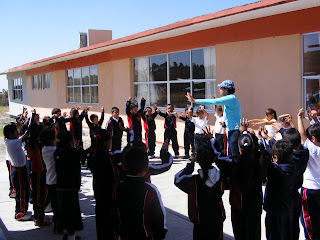If you have run out of ice breaker ideas here are some fresh ideas you can add to your classes. Just look at the following example.
Candy Introductions
Candy Introductions is a get-to-know-you game that helps people learn new facts about each other in an easy way. They select various pieces of candy from a bag, and each candy variety is associated with a fact about themselves which they will introduce to the others. This game also goes by other names, including the M&M game, Candy Confessions, the Skittles Game, the Gum Drop game, among others.
Candy Introductions can work with any group size. The icebreaker works best when the group size is limited to 12, so if you have more than 12, divide the larger group and run the icebreaker within the smaller sized groups. This icebreaker works best indoors, and is well suited for classrooms or meeting rooms. Materials required are: candy with about five different variations (color or candy type), and an optional chalkboard/whiteboard.
Setup for Candy Introductions
Purchase several variety packs of candy, enough for each person to be able to have at least five pieces. They can be any candy type, but not too many choices (limit it to around five or six different varieties). Alternatively, you can buy gummy bears, life savers, gum drops, skittles, m&ms, or any other candy that already has a variety of colors.
Instructions for How to Play
Pass around the candy and tell each participant to choose anywhere from 1 to 5 pieces of anything that they want. Instruct them not to eat it yet, though. After they have chosen their candy, you will tell them what each candy type/color represents.
If there is a whiteboard or chalkboard present, write on the board the following:
- Red – Favorite hobbies
- Green – Favorite place on earth
- Blue – Favorite memory
- Yellow -Dream job
- Orange – Wildcard (tell us anything about yourself!)
If you don’t have the above colors, change the above to match the candy types that you have. Each person takes turns introducing himself or herself, beginning with their name and then saying one fact for each candy type that they have. This easy introduction game should go relatively quickly (assuming they weren’t greedy and that they didn’t take too many pieces of candy!)





























